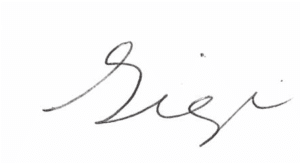A Note from the Editor
Dear Living School alumni,
The Three-in-One God is giving birth to transformation in the world through you. Much of this transformation, I suspect, takes place under the radar as you go about your often-busy days, radiating love in a fractured world. Sometimes it is simply the full presence you give to a friend in crisis; sometimes it is your non-reactive, third-way response in a polarized situation; sometimes it is playing with your kids, toys strewn all over the floor. This is how the world changes and how God grows—small and simple like a mustard seed.
This newsletter highlights several of your projects that are nurturing transformation throughout the world. Daniel O’Grady (‘17) reflects on his experience teaching meditation classes at the Chicago FBI office. I interview contemplative songwriter Alana Levandoski (‘15) about her collaborative Thomas Merton album with James Finley. Hailey Mitsui (‘19) shares her experience attending the Mystic Soul Conference (co-founded by Teresa Pasquale Mateus, ‘15). Paul and Teresa Tratnyek (’15 and ‘16) offer a moving tribute to the recently deceased Dennis Murphy (’15). Holly Roach (‘15) invites us all to join the Poor People’s Campaign led by Rev. Dr. William Barber and Rev. Dr. Liz Theoharis. And, of course, this issue includes an update from a CAC staff member (Gigi Ross) and a poignant Lenten greeting from Cynthia Bourgeault.
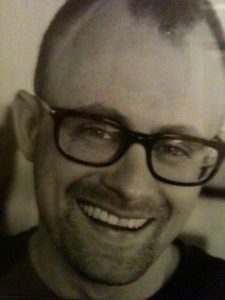
To that end, I enlist your help. How are you experiencing the contemplative dimension of reality in your everyday life? What projects are you working on? How are you being caught up in God’s Trinitarian flow? If you have reflections, articles, poems, photos, or alumni-related news you’d like to share, email me at [email protected]. I also invite culture reviews (whether book, film, music, or otherwise) and ideas. To start with, has anyone seen the film In Pursuit of Silence and wish to review for a future edition?
May we all more fully awaken to our inherent oneness in Christ. Our world is waiting and creation is, as the apostle Paul says, groaning in anticipation.
Yours in evolutionary love,
Mark
Staff Note from Gigi Ross
One of the last things I did as 2017 came to a close was to watch a short video in which Joe Brewer, Culture-Designer-in-Residence at The Evolution Institute, provides a third-force look at climate change. The video opens with the question, “What future are you living into being?” Seeing climate change as either a story of hope or a story of doom presents us with a false choice. The full story includes both hope and doom. We are invited to live a story of “authentic painful struggle worth having.” We create the story by living it in love. We discern our next steps by focusing on “something or someone in the future that we love and cannot let be lost.” Not knowing is an essential piece of living the future into being.
I find this way of looking at climate change applicable to other hard questions. At the CAC, we are looking at diversity, equity, and inclusion in our staff and program life. What kind of future of diversity and inclusion are we living into being? Are we willing to live a story of authentic painful struggle that is worth having so we might birth a more inclusive and diverse CAC and Living School?
You may have other hard questions that could benefit from a third-force way of including both hope and doom. Identifying and practicing with these opportunities is one way to continue living the school, living the learning.
I trust you will find something in this newsletter that will support your ongoing integration. I’ve stepped back from managing the newsletter to take care of the increasing details that have arisen as the Living School evolves. I’m grateful for Mark’s leadership and care as he midwifes this and future newsletters!
Faculty Reflection — Cynthia Bourgeault
“Remember, O man, that thou art dust, and to dust thou shalt return.”
As this alumni newsletter wends its way to you, we have barreled past Ash Wednesday, which this year—February 14—happened to coincide with Valentine’s Day. Does it strike you that there’s something deliciously ironic here: that in this of all years, the feast of love and the solemnity of self-examination and repentance come so closely intertwined?
I have to admit that I’ve always loved the Ash Wednesday liturgy. Antiquated, gender-challenged though its language may be, it inevitably and forcibly calls me back, as the ash is smeared on my forehead, to the palpable remembrance that we belong to earth: we are formed of her and will all too swiftly return to her. In a religion that seems to spend so much of its time getting out of the body, this fleeting remembrance of our universal habitat in the biosphere has always struck me as grounding, honest, and strangely comforting. . . .
(Click here to read Cynthia’s full reflection.)
Alumni Spotlight
Teaching Meditation at the FBI
Daniel O’Grady, Ph.D. (’17)
On November 15, 2017, after months of delays and set-backs, I began teaching my first meditation class with agents and support staff at the Chicago office of the FBI. . . . The program, titled “Mindfulness Meditation for Stress Management,” ran for six weeks, with one 60-minute session each week. . . . Each session consisted of a brief intro meditation to clear the mind, become conscious of one’s body, and set a personal intention for that session. I then shared some didactic teaching, followed by an individual exercise or small group reflection, ending with 8-10 minutes of mindful meditation. We would close with silent gratitude and dedication. . . . While driving home after the final session, I thought of another thing I learned from Fr. Richard. Echoing Catherine of Genoa, he said, “My deepest me is God.” Participants were clearly beginning to learn and be conscious of their deeper self. And they wanted more. Or as St. Augustine expressed, “You have made us for Yourself, O Lord. And our heart is restless until it rests in you.”
Interview
Alana Levandoski (’15) on Thomas Merton’s Point Vierge
and Collaboration with James Finley
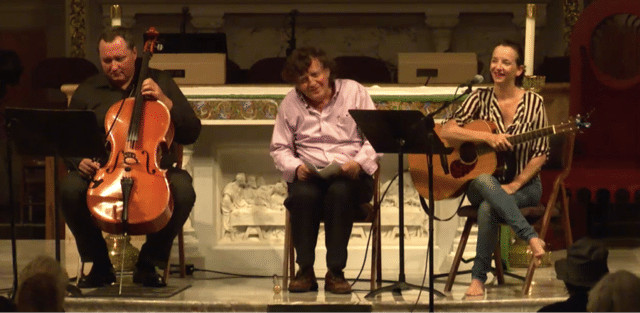
Mark: Tell us about your newest collaboration with CAC core faculty, James Finley.
Alana: In December 2016, I set out to work on a musical album centered around James Finley’s acclaimed book, Merton’s Palace of Nowhere. . . . It took nearly a year of daily sitting with Merton’s work . . . to get to the place where I felt I could unleash the creative process of composition.
Mark: The title of the album is Point Vierge. What does this phrase refer to?
Alana: Point vierge, French for the “virgin point,” or as Jim calls it, “zero variance,” is a term Merton used to get at the mystical metaphor for the door that is everywhere and nowhere. This is so far the calling of my life: to poetically engage with that which cannot be created or uncreated, that “point of nothingness that belongs entirely to God.”
Mark: What role did the Living School play in your vocation as a contemplative songwriter?
Alana: Part of what drew me to the Living School was that I had let go of my identity as a recording artist. Through the deep discernment process for my “integration project,” I was surprised to gingerly pick up the work of writing and recording music again. I was also greatly surprised that the music would be spiritual in its tone and breadth, something I had vehemently stayed away from as a folk/roots songwriter. This was in part because the thought of writing and singing anything that would lead folks to the God I had been familiar with—the punitive God who couldn’t look at me—made me feel disintegrated in my spiritual search. The Living School helped me find the courage to step into a spacious place for growth and renewal and take off some of the damaging lenses through which I was looking at God and reality. I suppose I could say that what I write now is more about that inner integrity at the heart of the universe—a benevolent universe that is “on the journey, too,” as Teresa of Avila would say. . . .
Learn more about Alana and Jim’s album at alanalevandoski.com.
Editor’s Note
The Mystic Soul Conference
Chicago, Illinois, January 2018
Living School alumna Teresa Pasquale Mateus (’15) teamed up with Jade Perry and Ra Mendoza to produce the Mystic Soul Conference this January. Through creating this experience, they sought to, in their own words, center “the voices, teaching, practices, and wisdom of People of Color at the intersections of mysticism, activism, and healing.”
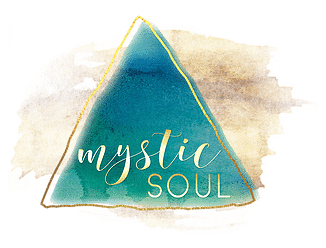
I had the great pleasure of witnessing their vision being born, on January 11-13. From the first moments of walking into the Mystic Soul Conference, my body felt that it was entering sacred space. Lights streamed decoratively from the ceiling of the conference room; large icons featuring saints of color framed a stage-size communal altar; colorful banners listed elements from Mystic Soul’s “Rule of Life,” with subversive wisdom phrases such as “Centering the Margins,” “Self-Care is Liberation,” and “The Monastery is the World”; seats encircled a speaker’s podium (rather than dutifully stacked in front of it, as if the speaker pedagogically held all the wisdom); and, what’s most important, more people of color filled the space than I have ever witnessed at any gathering claiming the mantle of “contemplative.”
It was beautiful and my white, heterosexual male body felt it. I nearly broke into tears upon entering the main hall—and the conference hadn’t even begun yet. Through the physical space, not to mention the skilled teachers, facilitators, chant-leaders, and healers present, Mystic Soul demonstrated that when it comes to the spiritual life, aesthetics matter, bodies matter, and people of color matter.
I asked a current Living School student and Curator of Contemplative Space for the Mystic Soul Conference, Hailey Mitsui, to share her experience.
Reflections on the Mystic Soul Conference 2018
Hailey Mitsui (’19)
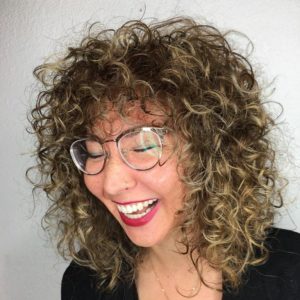
My journey to the weekend had started when I met Teresa Pasquale Mateus (Mystic Soul Project Co-founder) at a contemplative retreat. We got to talking and I felt compelled to confide a fear that had started to overwhelm me. I asked her, do I need to choose between the contemplative path and my ethnic community?
Like many post-evangelical millennials (I know it sounds niche, but we’re a quickly growing demographic), I happened upon the contemplative tradition through Richard Rohr’s teachings, and they changed my life. They saved my relationship with the Divine and renewed my curiosity for the infinite.
I dove head-first into any and all Christian contemplative teachings. I inhaled every book, every podcast, every webinar and program. After a few years of racing down this path, I lifted my head and stopped dead in my tracks. Where was everyone else that looked like me? Where were the teachers that looked like me? Where were the speakers that reflected my experience as a woman of color in this world? I felt very alone and disoriented.
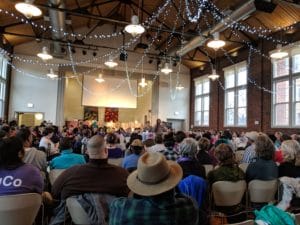
So, when Teresa looked at me with knowing eyes and replied, “Let me tell you about a project I’m working on. The Mystic Soul Project, a person of color centered approach to activism and contemplation/mysticism,” I responded without hesitation: “I’m in.”
On a Thursday night as I sat among the 400 seekers who had braved the below-freezing Chicago January weather to be alongside fellow Contemplatives of Color, I breathed the deepest sigh of relief. A community elder led us in our opening ceremony by singing, “Come on in from the outside, come on in from the cold,” and then all 400 joined in one voice, “Come on in from the outside, come on in from the cold,” now adding harmonies, “Come on in from the outside, come on in from the cold.” Tears streamed down my face.
They were tears of resonance, sadness, gratitude, hope, anger, relief. Come on in from the outside, come on in from the cold. I accepted the invitation to take off my layers of emotional protection and felt my whole self being held by all the strangers that surrounded me. What a feeling. I was home.
Alumni Spotlight
Remembering Brother Dennis Murphy, FSC (’15)
Paul & Teresa Tratnyek (’15 and ’16)
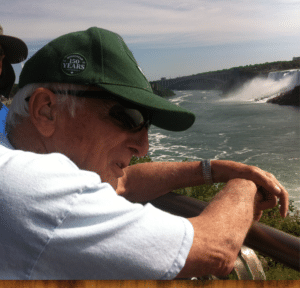
Dennis was a teaching Brother with the De La Salles for 60+ years and spent 20+ years with the Catholic Worker Movement in its promotion of non-violence, simple living, practice of the works of mercy, and, to quote Dennis, “an attitude of comforting the afflicted and afflicting the comfortable.” He founded Su Casa House in Chicago and worked at the Catholic Worker House located down the road from the CAC in Albuquerque. . . . His life of prayer, sense of humour, thirst for knowledge and understanding, and unrelenting commitment to serving and being with the poor, especially the homeless, inspired many of us.
. . . Dennis told us, “I’m working really hard at being present. When I’m with a person, I try to become aware of all of my thinking. I try to empty out my thoughts, my reactions, my emotions, my judgments, my getting ready to respond. It takes so much patience to really be faithful to being present.” All those who met and knew Dennis have been blessed by his presence.
Paul & Teresa Tratnyek (’15 and ‘16)
